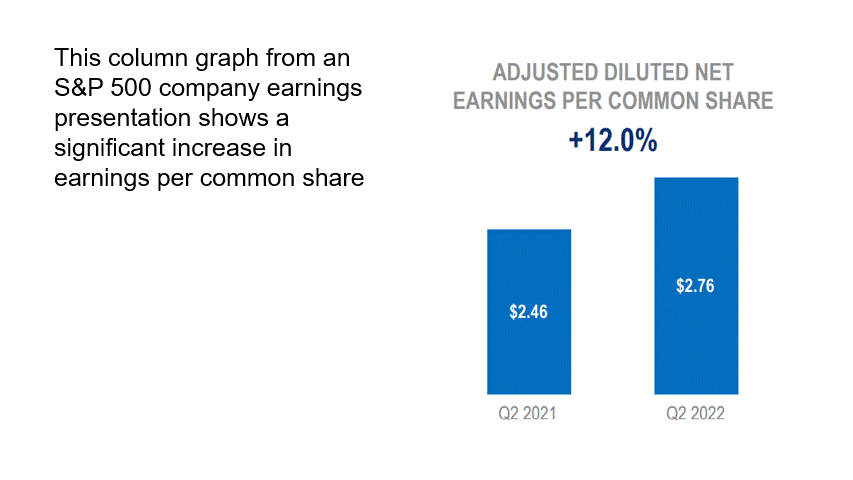I am no longer surprised when I see a column graph in a quarterly or annual financial report that is created to give the impression that the results shown are better than the actual numbers shown. The graph does not start the vertical axis at zero so the height of the columns is not accurately indicating the values. This can be misleading for viewers and is far too common in financial presentations today.
Here’s an example from a quarterly earnings presentation from an S&P 500 company.

It is tempting to make results look better than they really are. The problem is that in doing so with a column graph that uses a non-zero-based axis, it is deliberately misleading the viewer. Once they figure out the real story, and they always will, they start to question where else you have tried to deceive them. Now they start to doubt all the results you are showing.
You don’t need to do this. Just show the accurate column graph. Viewers will appreciate the honesty and will have more confidence in the analysis and results you are presenting.
If your team wants to learn how to use Excel to create visuals that inspire confidence in your analysis and reports, check out my live customized FinancialViz training courses that are delivered virtually so staff can attend wherever they are located. Go to www.FinancialViz.com to learn more.

Dave Paradi has over twenty-two years of experience delivering customized training workshops to help business professionals improve their presentations. He has written ten books and over 600 articles on the topic of effective presentations and his ideas have appeared in publications around the world. His focus is on helping corporate professionals visually communicate the messages in their data so they don’t overwhelm and confuse executives. Dave is one of fewer than ten people in North America recognized by Microsoft with the Most Valuable Professional Award for his contributions to the Excel, PowerPoint, and Teams communities. His articles and videos on virtual presenting have been viewed over 4.8 million times and liked over 17,000 times on YouTube.
